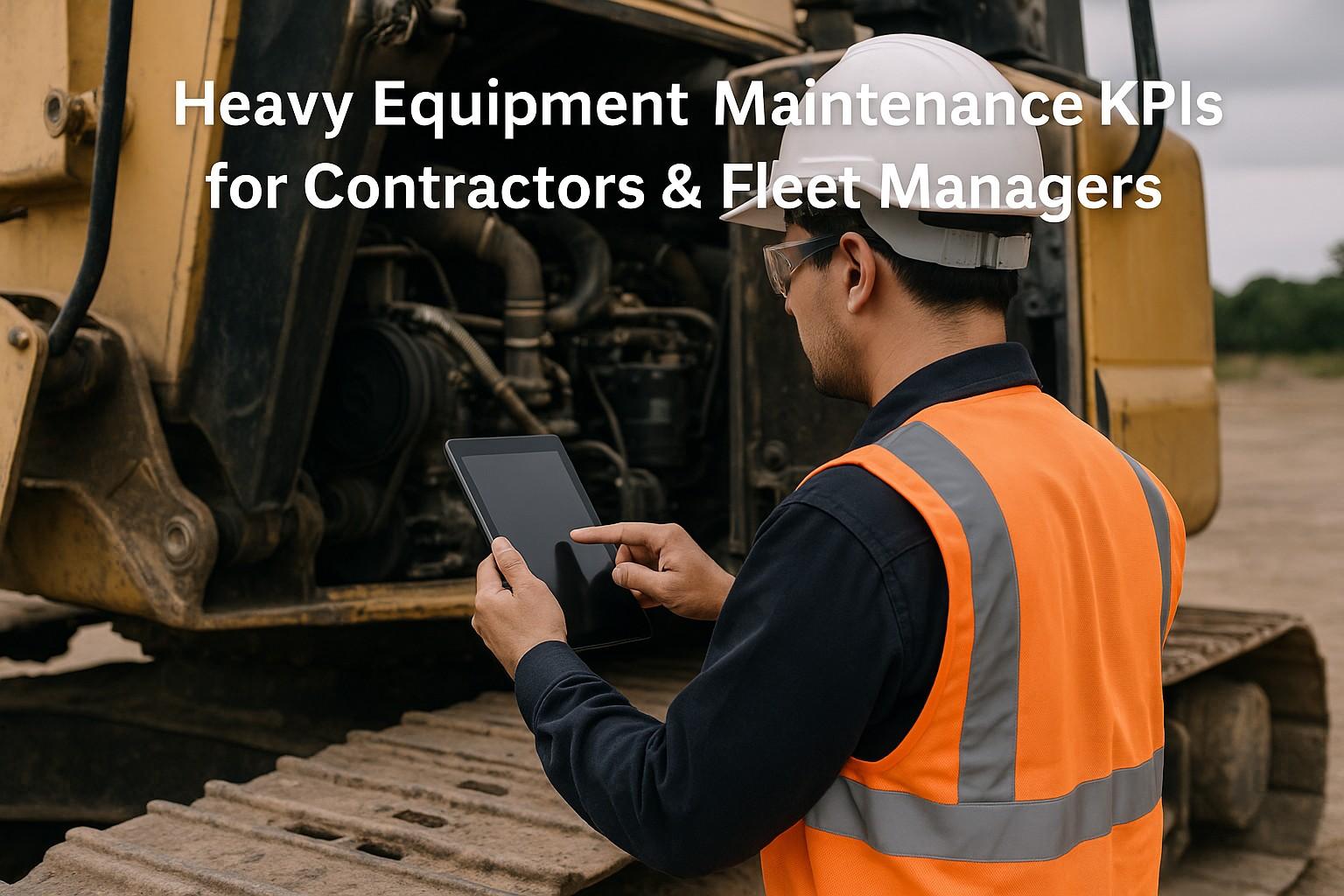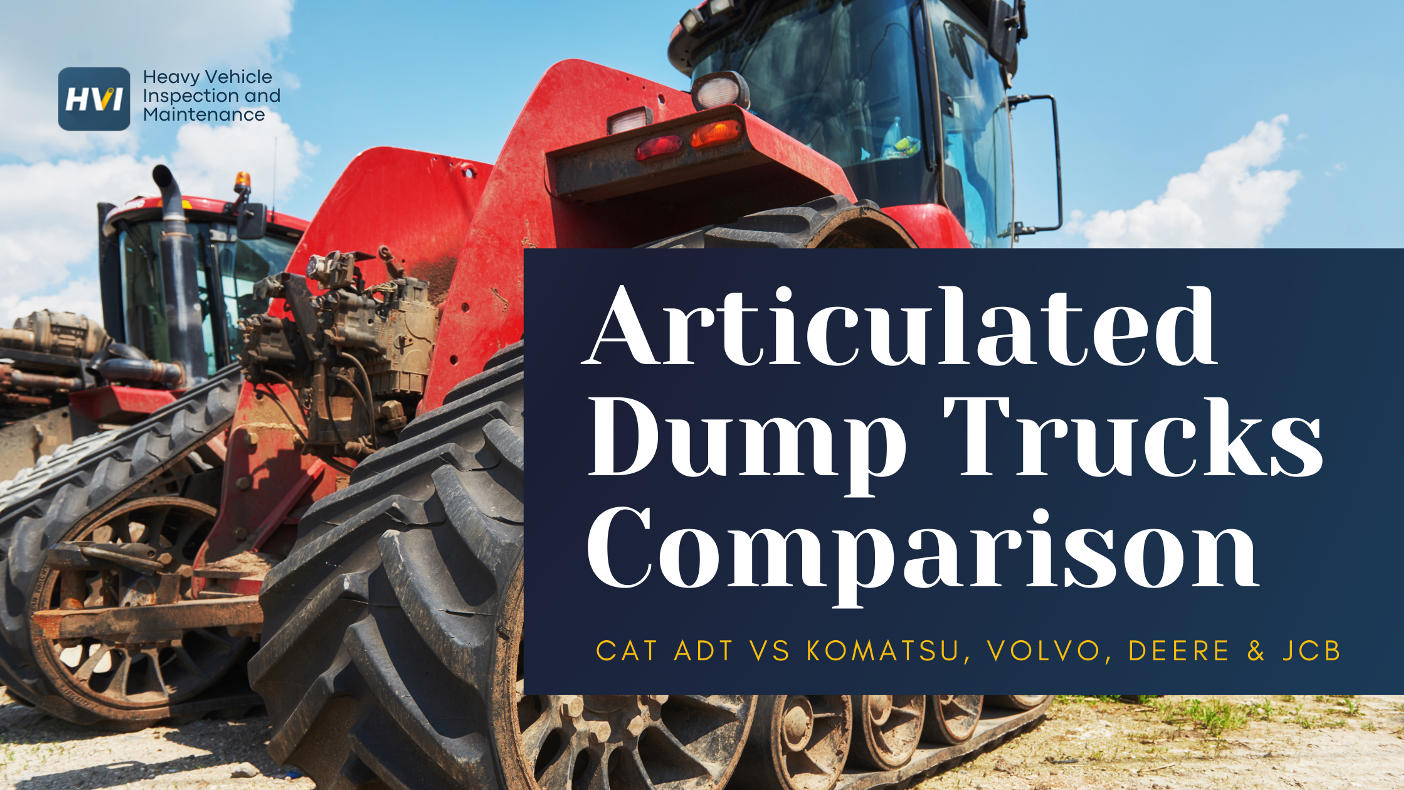Essential equipment guide featuring the most utilized construction machinery and proper inspection protocols for safety and compliance.
The construction industry relies on properly maintained and inspected heavy equipment to ensure safety, compliance, and optimal performance. With the US construction equipment market valued at over $383 billion and experiencing a steady 4.05% annual growth rate, implementing comprehensive inspection protocols using modern Heavy Vehicle Inspection (HVI) software has become essential for construction professionals managing equipment fleets.
From towering skyscrapers to critical infrastructure projects, the same essential pieces of equipment power job sites across America. However, ensuring these machines operate safely and efficiently requires systematic inspection protocols and digital documentation. This comprehensive analysis reveals the top 10 most used construction equipment while highlighting the critical importance of proper inspection procedures and HVI compliance management.
Critical Safety Insight: OSHA reports show that proper equipment inspection and maintenance can prevent up to 85% of construction equipment-related accidents. Heavy Vehicle Inspection software helps companies maintain comprehensive inspection records, ensure regulatory compliance, and protect both workers and valuable equipment investments.
135,000
New construction machines financed in 2023 - all requiring systematic inspection protocols
The Heavy Hitters: Top 5 Most Essential Construction Equipment
1. Compact Track Loaders
Leading the pack with an impressive 38.2% of all construction equipment ownership, compact track loaders have revolutionized job site efficiency. These versatile machines require regular inspection of hydraulic systems, track tension, and safety features to maintain optimal performance and worker safety.
Top Models:
Caterpillar 259D3, Kubota SVL97-2, Bobcat T770
Primary Applications:
Material handling, site preparation, landscaping, demolition cleanup
Key Inspection Points:
Hydraulic fluid levels, track condition, safety systems, operator protection
HVI Compliance:
Daily pre-use inspections, weekly detailed checks, monthly comprehensive audits
2. Mini Excavators
Experiencing a remarkable 15% year-over-year growth, mini excavators require meticulous inspection protocols due to their complex hydraulic systems and frequent use in confined spaces where safety is paramount.
Leading Models:
Kubota KX040-4, Bobcat E35, Cat 303.5E2
Key Uses:
Trenching, utility installations, residential construction, precise excavation
Critical Inspections:
Hydraulic system integrity, bucket and arm condition, stability systems
Safety Focus:
Tip-over protection, emergency stops, operator visibility systems
3. Skid Steer Loaders
With 65% of units being rented rather than purchased, skid steers require standardized inspection protocols that can be quickly implemented by various operators and maintained through digital HVI systems for consistent safety standards.
Popular Choices:
Bobcat S650, Cat 262D3, Kubota SSV65
Applications:
Site prep, material transport, attachment-based specialized work
Inspection Priority:
Attachment connection systems, hydraulic quick-couplers, safety interlocks
Digital Tracking:
Attachment usage logs, operator certification verification, maintenance scheduling
HVI Software Advantage: Heavy Vehicle Inspection software streamlines the inspection process for complex equipment fleets, ensuring consistent documentation, automated compliance reporting, and real-time safety alerts. This is particularly crucial for rental equipment that changes operators frequently.
4. Wheel Loaders
Essential for material handling operations, wheel loaders require comprehensive inspection of load-bearing components, transmission systems, and safety features. Most feature 5-10L engine capacity requiring specific maintenance protocols tracked through HVI systems.
Industry Standards:
Cat 950M, Volvo L120H, Komatsu WA380-8
Core Functions:
Truck loading, stockpile management, road construction material handling
Inspection Focus:
Bucket and lifting arm integrity, transmission fluid analysis, brake systems
HVI Monitoring:
Load cycle tracking, engine performance metrics, preventive maintenance alerts
5. Hydraulic Excavators
Commanding 57.4% of the construction equipment market revenue, full-size hydraulic excavators represent the highest-value equipment requiring the most comprehensive inspection protocols and detailed maintenance documentation through professional HVI systems.
Market Leaders:
Cat 320, Komatsu PC210, Volvo EC210
Primary Uses:
Excavation, demolition, mining, infrastructure development
Critical Systems:
Main hydraulic pumps, swing motor assemblies, undercarriage components
Advanced Inspection:
Hydraulic fluid analysis, structural stress point monitoring, performance diagnostics
Use Our Professional Equipment Inspection Checklists
Access comprehensive digital inspection checklists for all major construction equipment types. Ensure compliance, improve safety, and maintain detailed records with our online inspection tools.
The Supporting Cast: Equipment Types 6-10 and Their Inspection Requirements
6. Backhoe Loaders: Dual-Function Inspection Protocols
Combining loader and excavator functionality, backhoe loaders require inspection protocols that cover both operational modes. Leading models like the Cat 430F2, John Deere 410L, and Case 580N need comprehensive checks of both front loader and rear excavator hydraulic systems, plus stabilizer leg safety mechanisms.
7. Bulldozers: Heavy-Duty Inspection Standards
Essential for land clearing and grading, bulldozers like the Cat D6T, Komatsu D65PX, and John Deere 850L require rigorous inspection of track systems, blade hydraulics, and engine cooling systems. HVI software helps track operating hours and schedule preventive maintenance for these high-stress applications.
8. Motor Graders: Precision Equipment Care
Road construction specialists like the Cat 120M, Volvo G930C, and Komatsu GD555-6 demand precise inspection of blade positioning systems, articulation joints, and grade control technology. Digital inspection records ensure consistent performance across multiple operators and job sites.
9. Dump Trucks: Load Safety and Compliance
With a 12% increase in articulated dump truck sales, models like the Cat 730C2, Volvo A40G, and John Deere 410E require specialized inspection protocols focusing on body lifting mechanisms, load distribution systems, and brake performance under various load conditions.
10. Mobile Cranes: Critical Lift Safety Inspections
Commanding premium rental rates of $1,200-$3,500 per day, mobile cranes require the most stringent inspection protocols including load chart verification, boom and cable inspection, and comprehensive safety system testing. HVI software ensures all critical lift documentation meets regulatory requirements.
Regulatory Compliance Insight: The top manufacturers (Caterpillar with 21.5% market share, Kubota, Bobcat, John Deere, and Komatsu) all recommend digital inspection tracking systems. Heavy Vehicle Inspection software helps maintain manufacturer warranty compliance while meeting OSHA and DOT inspection requirements across all equipment types.
HVI Software: Revolutionizing Construction Equipment Management
Modern Heavy Vehicle Inspection software transforms how construction companies manage equipment safety, compliance, and maintenance. By digitizing inspection processes, companies can ensure consistent safety standards, reduce liability risks, and optimize equipment performance across their entire fleet.
Key Benefits of Digital HVI Systems:
- Automated Compliance Tracking: Never miss required inspections with automated scheduling and reminder systems
- Real-Time Safety Alerts: Immediate notifications for critical safety issues or maintenance requirements
- Comprehensive Documentation: Digital records that satisfy regulatory requirements and support insurance claims
- Operator Accountability: Clear assignment of inspection responsibilities with digital signatures and timestamps
- Predictive Maintenance: Data analytics to predict equipment failures before they occur
- Fleet Optimization: Performance metrics to optimize equipment utilization and reduce operating costs
The construction equipment landscape continues evolving with technological advancement, including electric powertrains, autonomous operation capabilities, and integrated telematics systems. HVI software adapts to these innovations, ensuring inspection protocols keep pace with equipment technology while maintaining the highest safety standards.
Transform Your Equipment Inspection Process
Join thousands of construction companies using Heavy Vehicle Inspection software to streamline compliance, improve safety outcomes, and protect valuable equipment investments. Our comprehensive platform includes equipment-specific checklists, automated reporting, and real-time monitoring capabilities designed specifically for construction professionals.
Building Safely with Proper Equipment Inspection
The construction equipment featured in this guide represents the foundation of American infrastructure development. From compact track loaders to massive excavators, each machine requires specific inspection protocols to ensure safe operation and regulatory compliance. By implementing comprehensive Heavy Vehicle Inspection software, construction professionals can maintain the highest safety standards while protecting their equipment investments and project timelines.
Frequently Asked Questions
What are the most important inspection requirements for construction equipment in the US?
The most critical inspection requirements include daily pre-use safety checks, weekly detailed mechanical inspections, and monthly comprehensive audits covering hydraulic systems, safety devices, and structural components. OSHA requires employers to ensure all equipment is inspected by competent persons before each use. Heavy Vehicle Inspection software helps standardize these processes and maintain required documentation for compliance with federal and state regulations.
How does HVI software improve construction equipment safety and compliance?
HVI software improves safety through automated inspection scheduling, standardized checklists, real-time safety alerts, and comprehensive documentation. The system ensures consistent inspection protocols across all equipment and operators, provides immediate notifications for critical issues, maintains digital audit trails for regulatory compliance, and uses predictive analytics to prevent equipment failures. This systematic approach can reduce equipment-related accidents by up to 85% according to industry safety data.
Which construction equipment requires the most frequent inspection protocols?
Mobile cranes and lifting equipment require the most stringent inspection protocols due to their critical lift safety requirements, including daily pre-use inspections and detailed monthly examinations. Hydraulic excavators and heavy earthmoving equipment need comprehensive weekly inspections due to high-stress operating conditions. Rental equipment, particularly skid steers and compact track loaders, require standardized inspection protocols for each operator change. HVI software helps manage these varying inspection schedules automatically.
What are the cost benefits of implementing digital inspection systems for construction equipment?
Digital inspection systems provide significant cost benefits including: 30-50% reduction in unplanned downtime through predictive maintenance, 25% decrease in insurance premiums for companies with documented safety programs, reduced liability exposure through comprehensive compliance documentation, improved equipment resale values due to documented maintenance history, and optimized maintenance scheduling that extends equipment life by 15-20%. The ROI typically pays for itself within 6-12 months through reduced repair costs and improved equipment utilization.
How can construction companies ensure their equipment inspection processes meet all regulatory requirements?
Construction companies can ensure regulatory compliance by implementing comprehensive HVI software that includes equipment-specific inspection checklists based on OSHA, DOT, and manufacturer requirements, automated documentation and reporting systems, operator training and certification tracking, regular audit capabilities, and integration with maintenance management systems. The software should provide customizable checklists for different equipment types, automatic compliance reporting, and real-time alerts for overdue inspections or critical safety issues. Regular training and system updates ensure continued compliance with evolving regulations.




